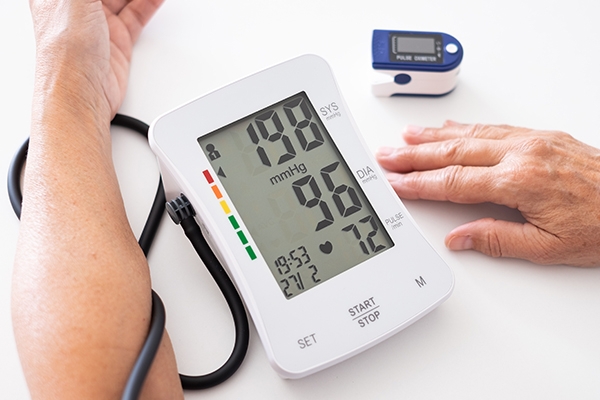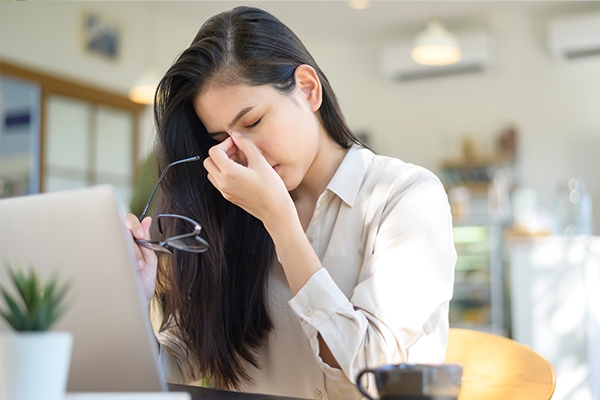What You to Need Know About Hypertension

You may not be aware that anything is wrong with your health when you suddenly find out your blood pressure is high. That is why high blood pressure or hypertension is often called the silent killer. Lifestyle changes are one way to control it.
Hypertension (high blood pressure) is a condition in which the pressure in the blood vessels exceeds 140/90 mmHg. The American Heart Association (AHA) defines a diagnosis as having systolic blood pressure ≥140 mmHg and/or diastolic blood pressure ≥90 mmHg on repeated exams.
Blood pressure is a measurement of the pressure or force that blood pushes against the blood vessel walls. When you get a blood pressure reading, you will see two numbers:
- The first number is systolic blood pressure. This value represents the pressure on the artery walls as the heart beats or contracts.
- The second number represents diastolic blood pressure. It monitors the pressure on the artery walls between heartbeats when the heart rests.
The only way to know whether our blood pressure is high or low is to measure it. Even if you feel healthy, it is recommended to have your blood pressure checked at least once a year. This check-up is crucial because it could save your life.
The following are blood pressure categories. If you fall into the hypertension level 1 or 2 category, you are diagnosed with high blood pressure.

Causes

High blood pressure develops gradually. This could be caused by unhealthy lifestyle choices, such as a lack of regular physical activity. Certain health conditions, such as diabetes and obesity, can also increase the risk of developing high blood pressure.
Unhealthy diets, such as high-sodium and high-fat foods, as well as not consuming enough fruits and vegetables and drinking alcohol, can also increase the risk of hypertension.
Symptoms

Many people who suffer from hypertension do not experience clear signs or symptoms. About 46% of adults are unaware that they have high blood pressure. This makes hypertension a leading cause of premature death worldwide.
Usually, people with hypertension start to feel symptoms when their blood pressure is very high (≥180/120). Symptoms of high blood pressure include severe headache, chest pain, dizziness, difficulty breathing, nausea, vomiting, blurred vision, anxious, confused, nosebleeds, and abnormal heart rhythm.
How is hypertension prevented?

The Ministry of Health of the Republic of Indonesia (2019) uses the CERDIK words for hypertension prevention.
- Cek kesehatan rutin (regular health checkups) including checking blood pressure.
- Enyahkan asap rokok (quit smoking) to reduce the risk of hypertension and other disorders.
- Rajin aktivitas fisik (daily physical activity): at least 30 minutes. Do it 4–5 times each week.
- Diet seimbang (a balanced diet): reducing salt intake to 5 g per day and increasing fruit and vegetable consumption. It is also recommended to avoid high-fat foods.
- Istirahat cukup (a consistent sleep schedule): approximately 8 hours.
- Kelola stres (stress management): helps lower hypertension.
Treatment

The ideal blood pressure target varies depending on the individual's health condition. For hypertensive people with cardiovascular disease (such as heart disease or stroke), diabetes, and chronic kidney failure, the target is less than 130/80 mmHg. Meanwhile, for most people without comorbidities, the ideal blood pressure target is less than 140/90 mmHg.
Hypertension can be treated with lifestyle changes and medication. In some cases, blood pressure can be reduced naturally. A healthy lifestyle plays a crucial role here. If you can control your blood pressure with a healthy lifestyle, you may be able to avoid, postpone, or even reduce medication use.
Doctors often recommend that hypertension patients take more than one type of high blood pressure medication to achieve ideal blood pressure targets. This blood pressure target varies depending on each individual’s health condition.
Hypertension medicines:
- ACE inhibitors include captopril and lisinopril to relax blood vessels and prevent kidney damage.
- Angiotensin-2 receptor blockers (ARBs), including candesartan and telmisartan, relax blood vessels and prevent kidney damage.
- Calcium channel blockers include amlodipine and nifedipine to relax blood vessels.
- Diuretics, including hydrochlorothiazide, help reduce excess water in the body to lower blood pressure.
Hypertension treatment is a long-term treatment. When you first receive this medication, your doctor usually recommends that you check in every two weeks or once a month to optimize treatment. Every six months or at least once a year you should undergo a check-up to see whether there are complications of hypertension.
It is important to understand that hypertension medicine must be taken daily, even if you have no symptoms.
When to see a doctor
A healthy lifestyle can help manage hypertension and lower the risk of cardiovascular disease. Lifestyle changes can help improve the effectiveness of hypertension medications.
Regularly visiting a health service to check your blood pressure is the first step toward making lifestyle changes to keep your arteries healthy. However, you can also monitor your blood pressure at home.
Here are the steps to obtain an accurate reading:
- Avoid exercising, consuming caffeine, or smoking for a minimum of 30 minutes before measuring blood pressure.
- Sit and relax for at least 5 minutes before taking measurements.
If you need hypertension treatment services, visit the nearest GWS Medika Clinic to get appropriate management and treatment. For further consultation, you can also click on WhatsApp. Get well sooner with GWS Medika.



